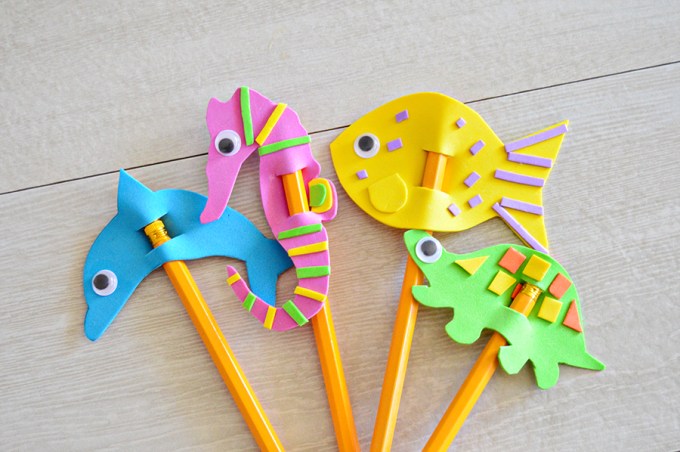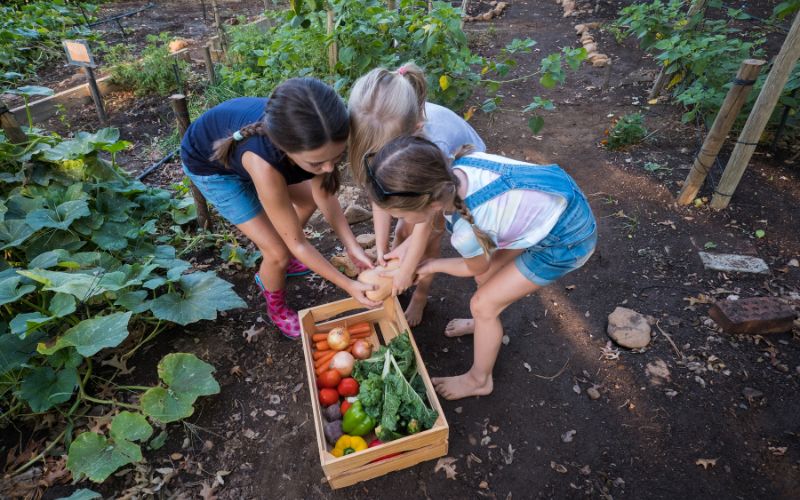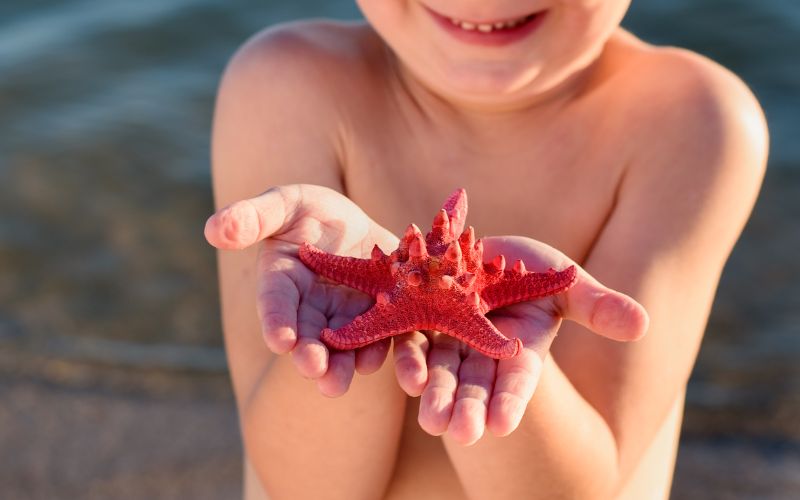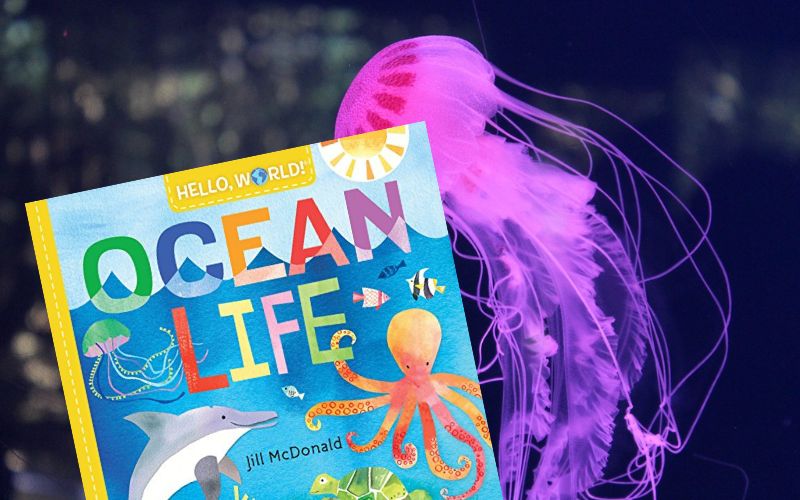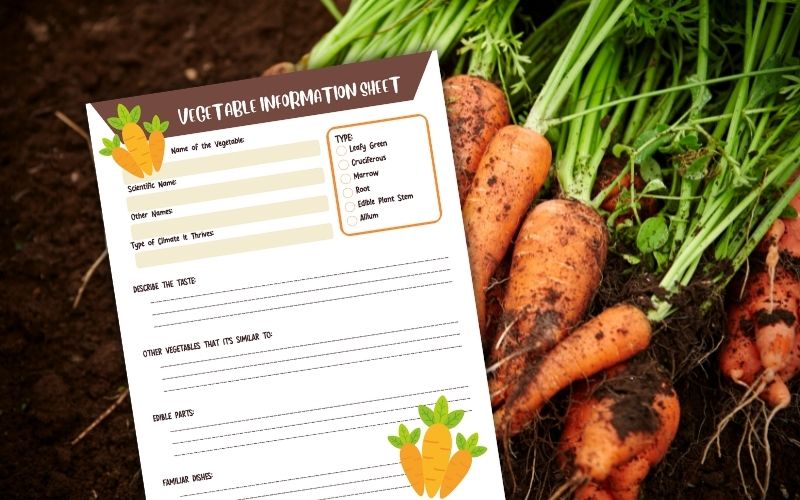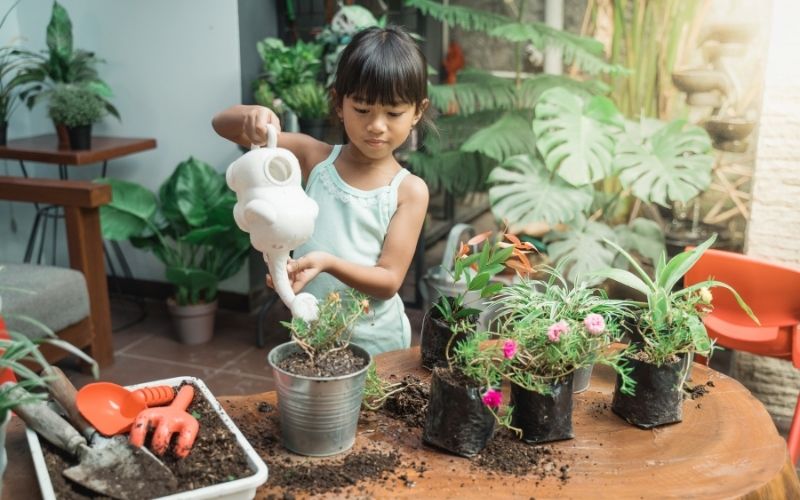Gardening Unit Study for Homeschoolers: Ideas and Activities
Do you have a budding gardener at home? If so, you may be looking for ways to incorporate gardening into your homeschooling lessons. Gardening is a great way to learn about science, math, and more! In this blog post, we will share some ideas for creating a gardening unit study. We will also provide links to some helpful resources. Happy learning!
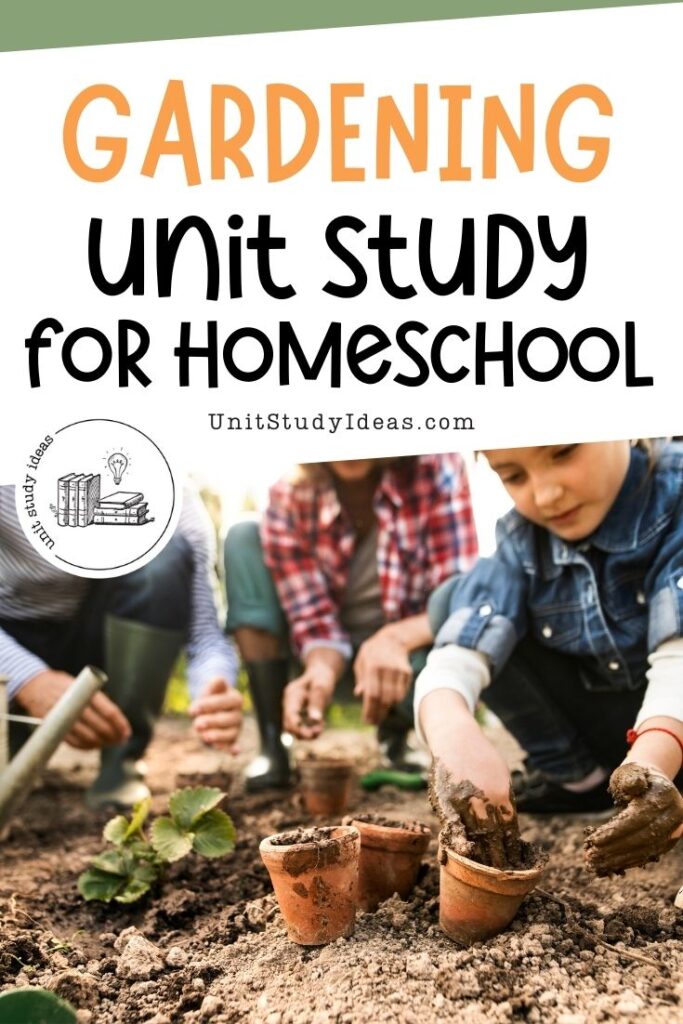
Do you want your kids to learn more about gardening? Unit studies are a great way to learn more about a topic. In this post, you’ll find ideas for lessons, activities, and resources that will help your child learn more about plants and gardens.
I hope you find this information helpful as you plan your homeschooling curriculum. With a little creativity, you can easily incorporate gardening into your studies. And who knows – maybe your child will be the next world-famous horticulturist!
Be sure to download my free printable Unit Study Planner!
Gardening with Kids
Gardening with kids is a great way to encourage their love of learning while also teaching them valuable skills. Not only does tending to a garden help to promote mindfulness and cultivate patience, but it also provides a wealth of opportunities for exploring both the natural world and basic scientific concepts.
Whether you are growing flowers, vegetables, or fruit trees, kids can learn about plant cycles, needs for sunlight and water, how seeds germinate, and much more.
Additionally, by working in the soil and connecting with nature on a hands-on level, kids can develop an appreciation for our planet and the importance of caring for the environment.
One of the best ways to enjoy gardening with kids is to use teaching moments throughout the process to foster a love of nature and increase their knowledge about plants and the environment.
Singing songs about different seasons or asking them why they think elements like soil or light are important can make their time in the garden even more valuable and engaging at the same time.
So if you’re looking for an educational activity that will keep your little ones fascinated for hours on end, why not try gardening with kids? You’ll be amazed at what they can learn from playing in the dirt!
Gardening Unit Study
Gardening can be a fun, rewarding activity for homeschoolers. Here are some ideas and activities to get you started with your gardening unit study.
Language Arts Ideas
Incorporating gardening into your language arts lessons is a great way to make learning fun and engaging. Here are a few ideas to get you started:
#1 Read books about gardens and plants. There are many great children’s books that can teach your child about the joys of gardening. A few of our favorites include “The Tiny Seed” by Eric Carle, “The Gardener” by Sarah Stewart, and “Miss Rumphius” by Barbara Cooney.
#2 Write stories about gardens. After reading a few books about gardening, challenge your child to write their own story. They can use their imagination to create a garden of their own or write about their experiences tending to a real-life garden.
#3 Make a plant journal. This is a great way for kids to track the progress of the plants in your garden. They can record things like how much sun and water the plant gets, what type of fertilizer you use, and how fast it grows. This is also a great opportunity to talk about the plant’s life cycle and what it needs to thrive.
#4 Do a plant study. Have your child choose one type of plant to focus on. They can research its scientific name, where it comes from, what it needs to grow, and any other interesting facts they can find. Then, they can create a poster or presentation to share what they’ve learned.
Language Resources
- Vegetable Garden Flashcards
- Free Printable Vegetable Study Worksheet for a Garden Unit Study
- Garden Word Cards
- FREE Spring Emergent Reader | Kindergarten Sight Words
- Garden Sight Words – Five Ways to PLAY
- Sight Word Search: How Does Your Garden Grow?
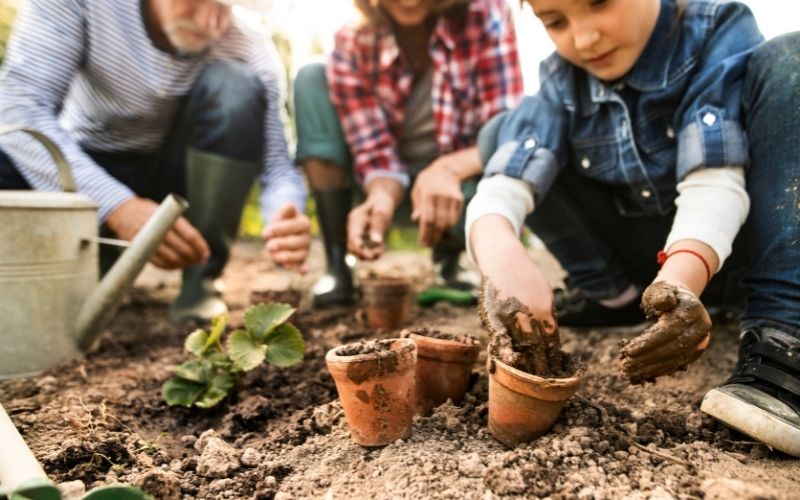
Science Ideas for a Gardening Unit Study
In addition to being a fun activity, gardening is also a great way to learn about science. Here are a few science-based ideas for your unit study:
#1 Plant observation. Have your child choose one plant to observe over the course of several weeks. They can record their observations in a journal, on a poster, or in any other way they’d like. Things they can look for include changes in the leaves, stem, flowers, and roots; how the plant responds to different types of weather; and whether or not it attracts insects.
- Plant Observation Mini Book
- Seed Observation Log
- Observation Card Printable Learning Materials
- Plant Tracking Sheet
#2 Plant life cycles. Use your garden to help your child learn about the different stages of a plant’s life cycle. You can grow different types of plants to observe, or use pictures and books if you don’t have space for a garden.
#3 Germination experiment. This is a great way to teach your child about how seeds germinate and grow into plants. All you need is some soil, some pots or containers, and some seeds. Have your child plant the seeds and then record their observations as the plants grow.
#4 Composting. Composting is a great way to teach your child about decomposition and the role it plays in the environment. You can create a compost bin using a garbage can or other container, and add things like fruit and vegetable scraps, eggshells, coffee grounds, and leaves. Have your child help you turn the compost every few days, and talk about the changes they see taking place.
Math Ideas for a Gardening Unit Study
You can also use gardening to teach your child some basic math concepts. Here are a few ideas to get you started:
#1 Plant measurement. Have your child measure different parts of the plants in your garden. They can record their findings in a journal or on a poster.
#2 Garden mapping. Help your child create a map of your garden. They can use it to label the different plants, trees, and other features. This is also a great opportunity to talk about directional words like north, south, east, and west.
#3 Plant counting. Count the number of leaves, flowers, or fruits on a plant. You can also have your child estimate the number before they count it to see how close they come.
#4 Garden addition and subtraction. As you add new plants to your garden, challenge your child to figure out how many more there are. And as plants die or are removed, have them subtract to find the new total.
#5 Garden multiplication and division. If you have more than one of the same plant, challenge your child to figure out how many there are in total. Then, see if they can divide that number by the number of plants you have to find out how many each one has. For example, if you have four tomato plants with a total of 12 tomatoes, each plant has three tomatoes.
#6 Area and perimeter. Have your child measure the length and width of your garden bed. Then, they can calculate the area by multiplying the two numbers together. To find the perimeter, they’ll need to add all four sides together.
#7 Garden graphing. Create a graph of the different plants in your garden. You can do this by plant type, color, or any other way you’d like. Then, challenge your child to answer questions about the data they see in the graph.
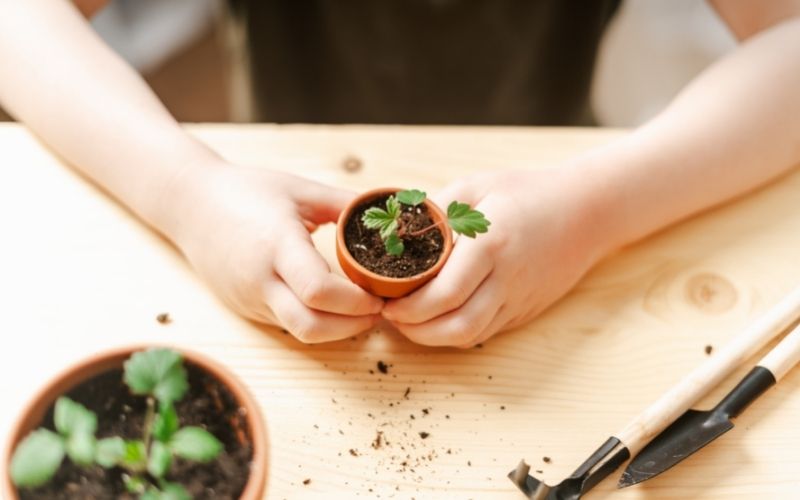
History Ideas for a Gardening Unit Study
You can also use gardening to teach your child about history. Here are a few ideas to get you started:
#1 The history of gardens. Talk about the different types of gardens that have been popular throughout history. You can even create a mini version of one in your own backyard.
#2 Famous gardeners. Learn about some famous gardeners throughout history, like George Washington and Thomas Jefferson.
#3 Victory gardens. During World War II, many people planted victory gardens to help with the war effort. Talk about what life was like during that time, and how gardening helped people feel connected to the land and each other.
- How To Plant a Victory Garden with Kids
- Children’s Victory Garden: Ideas And Learning Activities For Kids
#4 The Dust Bowl. The Dust Bowl was a period of severe drought in the 1930s. Talk about what life was like for people during that time, and how gardening helped them to survive.
Geography Unit Study Ideas for Homeschooling
#1 Local geography. Learn about the different types of plants that grow in your area, and why they’re well-suited to the climate. You can even take a trip to a local nursery or botanical garden to see some of these plants up close.
#2 The water cycle. Gardening is a great way to teach your child about the water cycle. Have them help you water the plants, and talk about where the water comes from and where it goes when it evaporates.
#3 The soil food web. The soil is full of creatures that help plants to grow. Have your child dig in the dirt to see what they can find, and talk about how these creatures help plants to thrive.
#4 The sun’s role in plant growth. The sun provides energy for plants to grow. Have your child track how much sun different plants in your garden get, and see if they can find a correlation between the amount of sun and the health of the plant.
YouTube Video to Watch about Gardening
Garden Themed Movies to Watch
Art Ideas for a Gardening Themed Unit Study
#1 Sculptures. Have your child create sculptures out of garden materials like sticks, stones, and leaves.
#2 Paintings. Use nature as inspiration for a painting. Your child can paint the flowers in your garden, or a scene from a favorite book set in a garden.
#3 Photography. Help your child to take close-up photos of the different plants in your garden. They can even make a collage out of their favorite shots.
#4 Garden journal. Have your child keep a journal of their gardening experiences. They can write about what they’ve planted, how it’s growing, and any observations they have made about the process.
- Garden Wish Flags
- Make a Bean Pole Garden TeePee
- How to Create Beautiful Flower Flags With Flower Pounding
- Colorful Glue Suncatcher
Music Ideas for a Gardening Unit
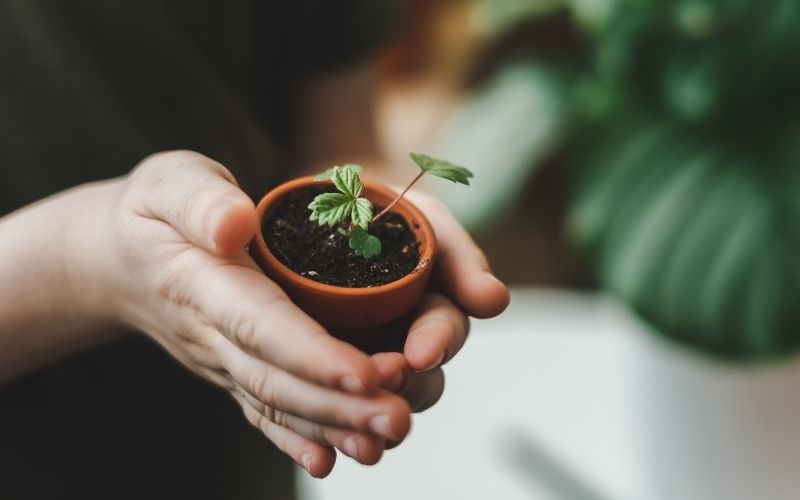
Field Trip Ideas For a Gardening Unit Study
If you want to take your homeschooling unit on gardening beyond your backyard, there are plenty of ways to do that! Here are a few field trip ideas to get you started:
- Visit a botanical garden. Most cities have at least one large public garden where you can stroll among the flowers, learn about different plant species, and maybe even take an educational class.
- Take a trip to the farmer’s market. This is a great way to learn about where food comes from and how it’s grown. You can also talk to the vendors about what they do and ask them questions about their farms.
- Visit a local nursery or greenhouse. Here, you can see a variety of different plants, flowers, and trees. You can also learn about how these businesses care for their plants and what it takes to grow them.
More Gardening Unit Resources
As you can see, there are lots of different ways to use gardening to teach your child about a variety of subjects. By getting creative, you can tailor the unit study to fit your child’s interests and learning style. So get out there and get growing!
I hope this post has given you some ideas for a fun and educational gardening-themed unit study. Be sure to share this post with your friends using the buttons below. And don’t forget to check out our other homeschooling posts, too!

